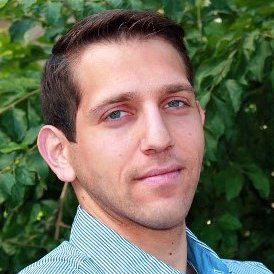Home > Blog > Brainpicking with PM Omri Ziv: “I am not the ‘product CEO’”
Brainpicking with PM Omri Ziv: “I am not the ‘product CEO’”

One of the most important assets we have, as product managers, is our community. Our peers in various industries have accumulated so much experience and together we constitute a well of invaluable knowledge.
I wanted to make all that knowledge and experience accessible, so I am launching a Product Manager Brainpicking column. Every couple of weeks, I’ll interview a product manager from a different industry and ask them to let us into their thought and creativity process. I’m really excited about this initiative – so much to learn!
For the first interview, I was delighted to sit down for a chat with Omri Ziv, a talented PM and a friend. Can you guess what his favorite part of the job is?

Omri, How did you become a product manager?
I started out in the Customer Success field, with a rich background in IT B2B products and an intimate familiarity with enterprise processes. I always worked closely with product teams, so I got a feel for the work and2 learned a lot from my colleagues. Eventually, the Product VP offered me a position in one of the product team.
What does your ideation process look like?
Well, customer requests are a meaningful part of our ideation mechanism. Every couple of weeks we held a customer request meeting for feature requests we harvest from ZenDesk. For ideation to be productive, it must be focused on specific goals. The ideas need to correspond with an existing objective.
Ideation meetings have a way of getting out of hand – multiple product professionals in the same room, pitching their ideas, pulling in different directions. It’s my role as product manager to ground the discussion and steer it into a productive path.
How do you decide which features to move forward with?
What keeps me grounded and goal oriented in product meetings is to ask: what do we want to achieve, as a business? What do we want to be? For instance, if we want to be enterprise-ready, we should invest in features like permissions, compliance, audit trail, security, globally oriented features and multiple user management.
We usually decide on new features by a rough segmentation of –
- 50% – components of our roadmap
- 25% – customer requests
- 25% – technical debt, KTLO stuff
What are your top 5 productivity tools?
We used an assortment of customer success platforms (Totango/Gainsight) and project management tools (Clarizen & JIRA) integrate in a way that works best for all our tools. I like experimenting with new tools from the industry, but I can’t give up Google Spreadsheets, which is irreplaceable.
We also used Box for file sharing and content management.
Tell us about a mistake you made at the beginning of your road as PM
We were debating about user permissions Vs. user roles. I thought that offering the users both would be redundant and confusing, whereas the programmer who worked on the feature thought both would be necessary. In the end, we consulted with one of our users – an early adopter and power user who signed up for all our betas. The user said we should split it up into two separate capabilities. It was a valuable lesson.
In what way was it a valuable lesson?
I learned that even though I am the product owner, the programmers live and breath the product’s nuances, in some cases – better than I do. In a broader sense, I learned to keep an open mind and maintain a certain humbleness, with regard to my team members’ insights and thoughts on the development process. It is so important to constantly question yourself and stay attentive to other opinions and ideas.
What would you describe as the single biggest challenge in product management?
That’s an easy one: feature prioritization. It is really hard to decide which features to move forward with, estimating the benefits for user and growth over investment of time and work effort.
How do you approach this challenge?
Picking the winning features is tough, and requires a clear and definitive vision. But even vision isn’t enough – we integrate 3 factors in our feature prioritization process:
- Value to the company
- Value to the user
- Effort and complexity required for full production
We are always focused on delivery, so that we can collect feedback as soon as possible. We give each factor marks and then calculate each feature’s total value. It has proven to be an effective method.
What do people not understand about product management/take for granted?
It’s funny, but people often view me as “the product CEO”, the guy who single-handedly makes all the product-related decisions. In reality, a good product manager knows to ask the right questions and not necessarily give the answers. Is this feature going to move the needle? Those are tough questions that every PM needs to confront and not let him/herself off the hook.
I find that the 5 Whys approach is the best: as a product manager, ask yourself “why” 5 times for every feature or big decision – and you’ll get to the root cause, the underlying reason for going ahead with something or not.
What is your favorite part about the job?
I love the opportunity to work broadly, across so many fields and professional topics. One day I get to wear the programmer’s hat and deal with specs and logical problem solving, and the next day I’m on-site, touching base with the customer and picking up the vibe in the field. It is by far product management’s greatest gift to a professional.
BONUS: download free sample of personal Kanban board at craft.io

